Brick fence
Brick fences cannot be called the most affordable type of fences for a cottage, but this material is still perceived as an indicator of prestige and status of the owner of the site, not for nothing that brick was used to build the walls of royal residences.
By the way, ordering the design of the facade with us, you can additionally add design fences, garage or gazebo.

The advantages of brick:
- reliability of the material;
- great durability and practicality;
- does not require special care or any special finishes.
Brick fences are virtually unmatched in strength: experts say that the masonry of one brick can withstand the impact of a passenger car, and masonry of one and a half to two bricks will provide the maximum level of reliability and durability of the structure and even with excellent sound insulation. When using quality materials and professionally made masonry brick fence will last more than a dozen years without requiring repair. It is rain-resistant, doesn't need painting or special care. Lifetime brick fences can affect the only fog and exhaust fumes (which should be considered if the site is located near the highway or in a wet valley).
What do you need to think about when deciding to build a brick fence?
Tasks
Each fence performs several functions at once, and in order for it to meet expectations, even at the design stage we need to clearly define for ourselves what we expect from the fence.
The most familiar function of a fence is to mark the boundaries of the site, it tells people around: there is an area beyond which not everyone can use. And if your fence will not solve other problems, feel free to put a low, perhaps, openwork design.
However, more often the fence serves as a means of protection - from prying eyes, from the encroachment on the territory and property, from the effects of the environment (noise, gas, sun, etc.).For many, this is the leading function, because the brick fence in our minds is high, solid, bulky ... But a blank fence - not necessarily boring! Colored or embossed masonry, clinker and textured bricks, inserts of other materials can help. See for yourself.
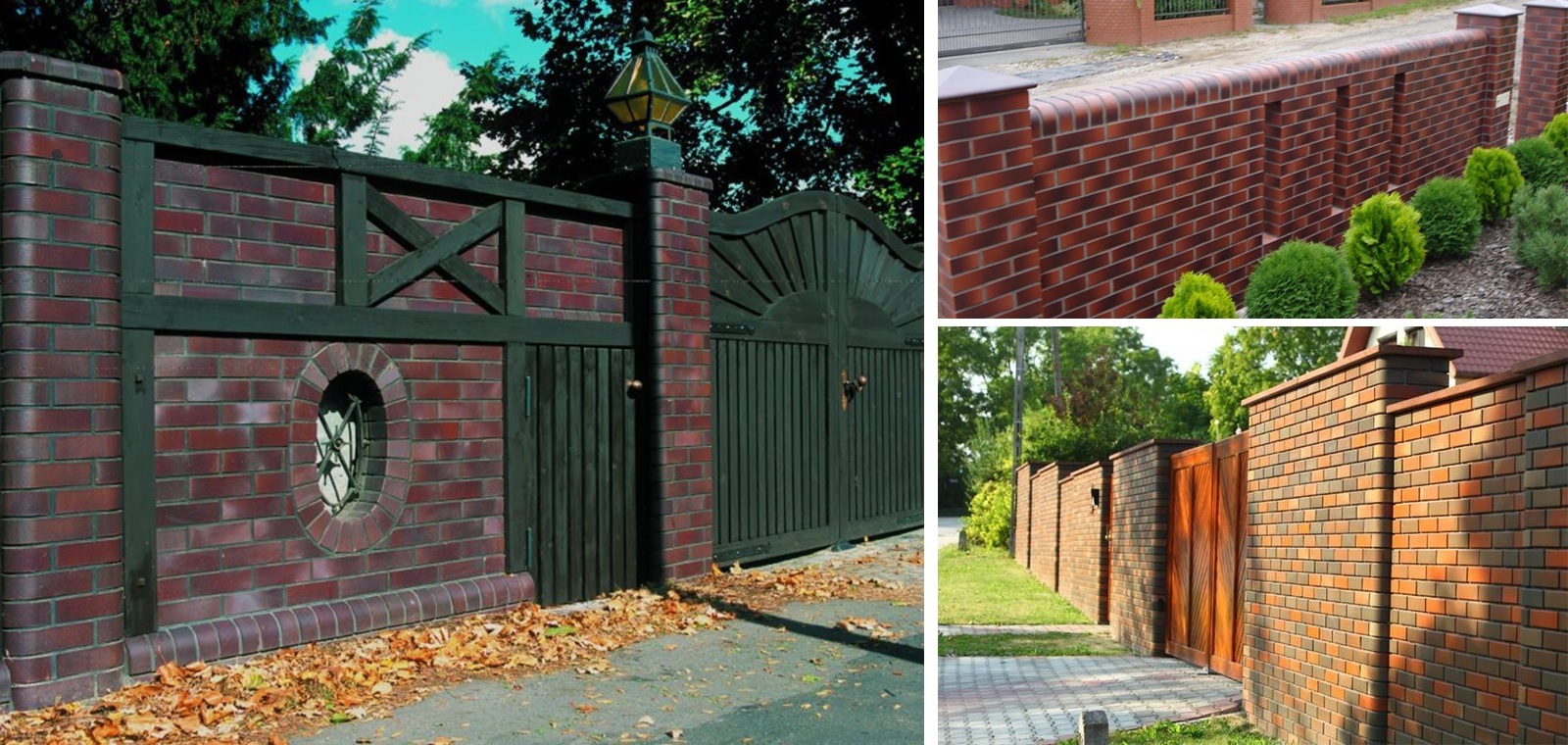
Fences inside the area, usually separate from each other areas of different purposes: it is a fence that separates the yard from the garden or outbuildings, patios from lawns for picnics or games. What they will be, depends only on the wishes of the owner, but the brick successfully solves any problem, it can make a low, but reliable and simple partition, and you can - arched masterpiece in the spirit of the Italian patio.
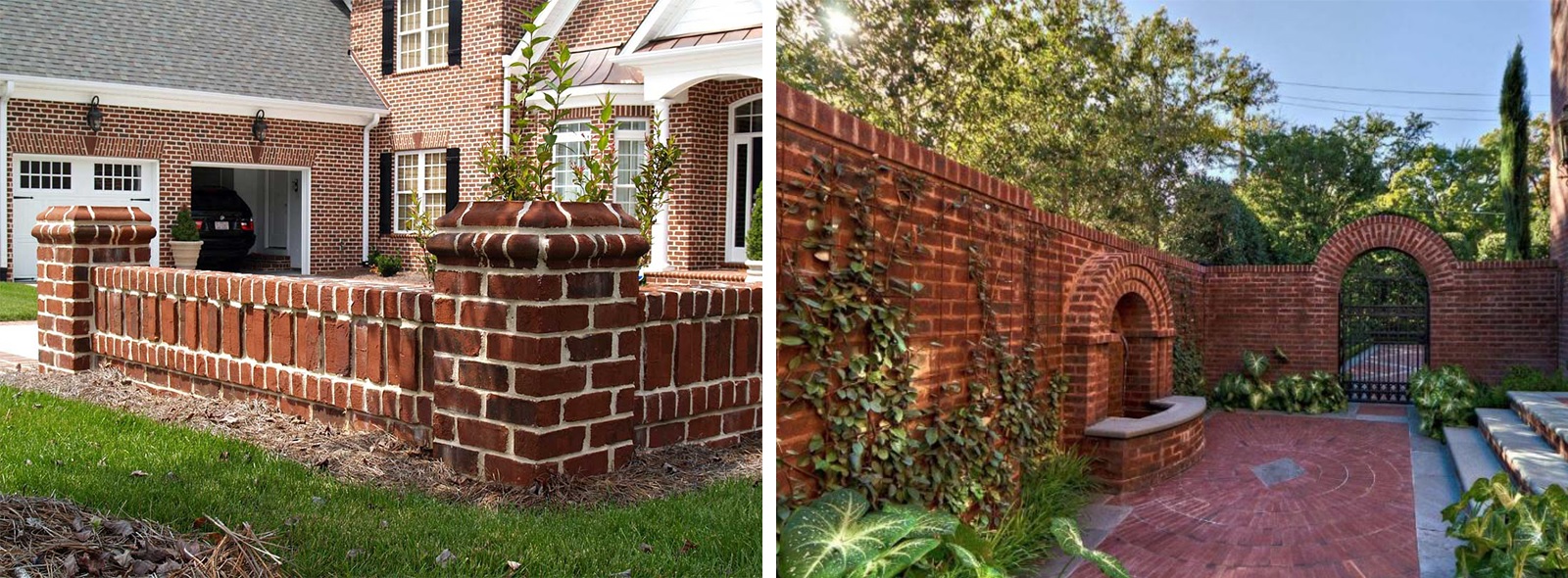
Shape
The psychological impact of architectural structures is often forgotten, but for a person to feel comfortable, he must feel the boundaries of his space, its size, because only then he feels secure. And if with the external boundaries of the estate everything is quite clear, then the fences in the own garden cause quite a lot of questions. Brick and here can be a harmonious material, because it will be a linking element for the ensemble of the house itself, the fence around the site and inside it.
Contrary to popular belief, openwork fences look great out of brick: sufficiently covering the inner area from prying eyes, they attract the play of light and originality of drawings, allowing you to vary the height of the fence, depending on the tasks.
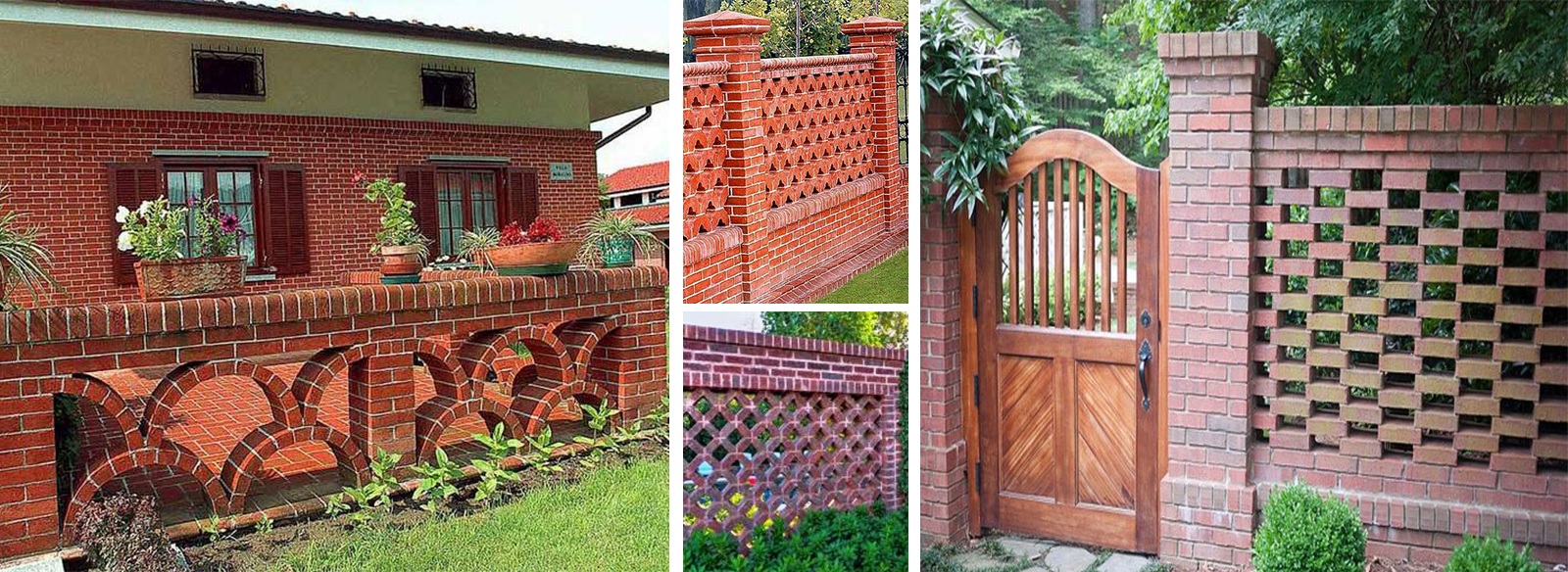

Blank (solid) fences were practically never used in the aristocratic homes of the nobility, as it was believed that they conceal the beauty of buildings and parks. Brick elements (plinths and supporting posts) served only as a frame for the lace wrought iron or cast iron inserts. Such combined forms of fences are still popular today, but in homage to modern materials polycarbonate, concrete or natural stone are used as inserts.
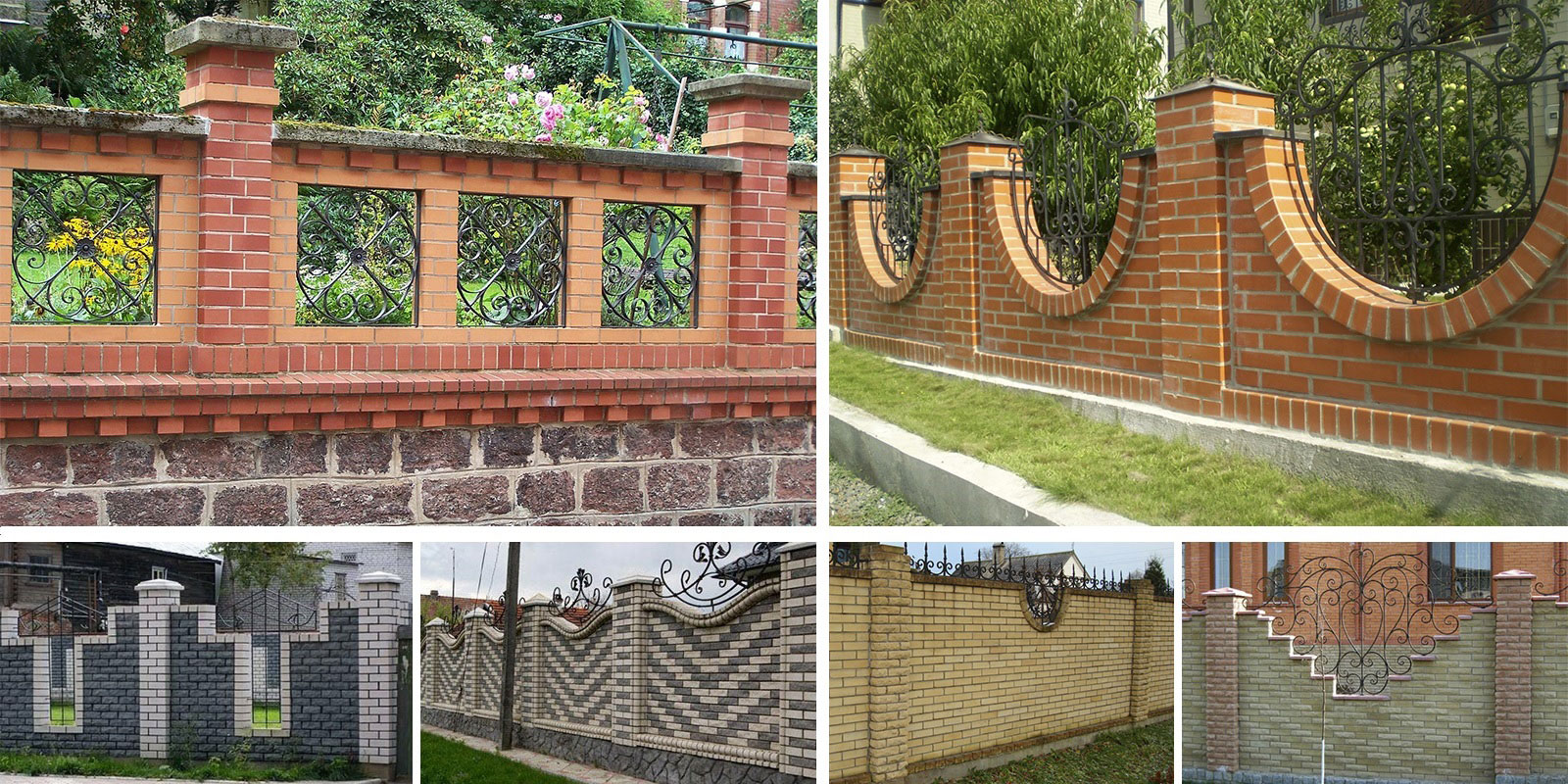

Material and technology
Brick fences are built using the same technology as the walls of brick buildings, hence the only serious disadvantage of such fences - the high cost of both the material itself and construction work.
To reduce costs, bricks can be used only for the construction of vertical support posts. For these purposes, almost any kind of brick is suitable, the only obstacle "on the way to the fence" can only serve as a poor quality of the facial edges. But it is worth remembering that solid bricks will give a lot of weight (and, therefore, serious costs for the foundation) and may require plastering the surface, but the clinker and textured will help to diversify the "face" of brick fences.
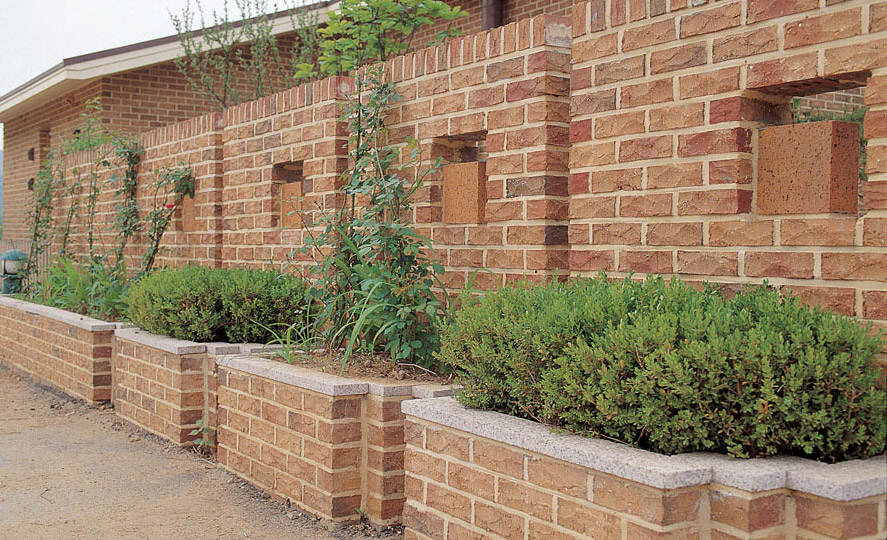
A brick fence is essentially a wall erected on an appropriate foundation. Strengthen it with posts at an equal distance from each other, made of the same material. For structural reliability, a stone fence sometimes has a plinth (50-80 cm pedestal along the ground surface), and for durability - a cornice on top of the fence, protecting the brick from precipitation.
Simplified technology of building fences made of brick allows you to use this material only for laying the base and arrangement of vertical columns, all the remaining segments of the fence made of other materials - wood, metal, concrete.
There are no restrictions on the height of fences, but the optimal height for those concerned about security, is considered 3-3.5 m. The length of the span between the posts depends on the height and thickness of the wall: from 2.5 meters (if masonry in half brick and not more than 2 meters) to 4-5 meters.


Everyone wants the fence to be beautiful, but a mixture of styles and colors is not the best way to affect the sense of peace, the external beauty of the fence and the overall harmony of the country ensemble, so, when starting to build this element of the residential home, you should think through its design simultaneously with the facades of the house.